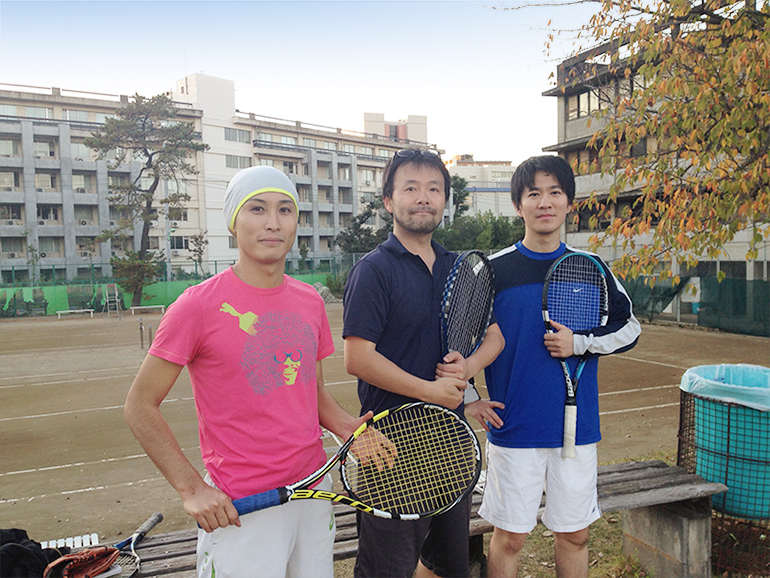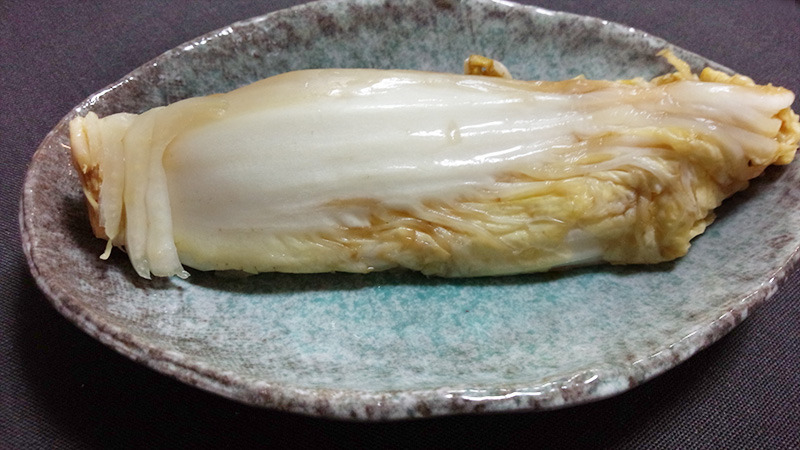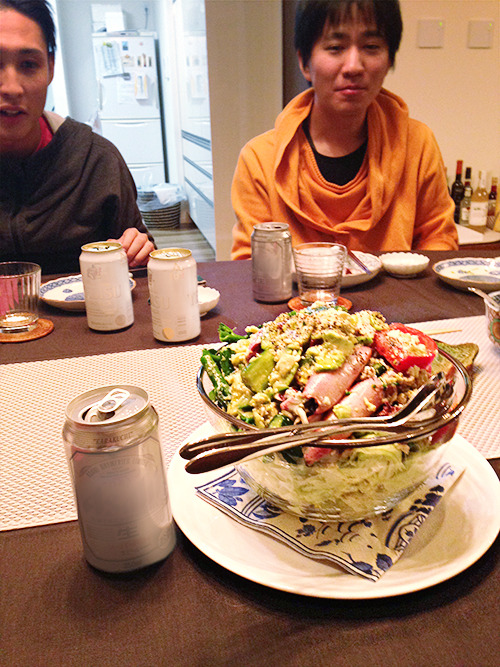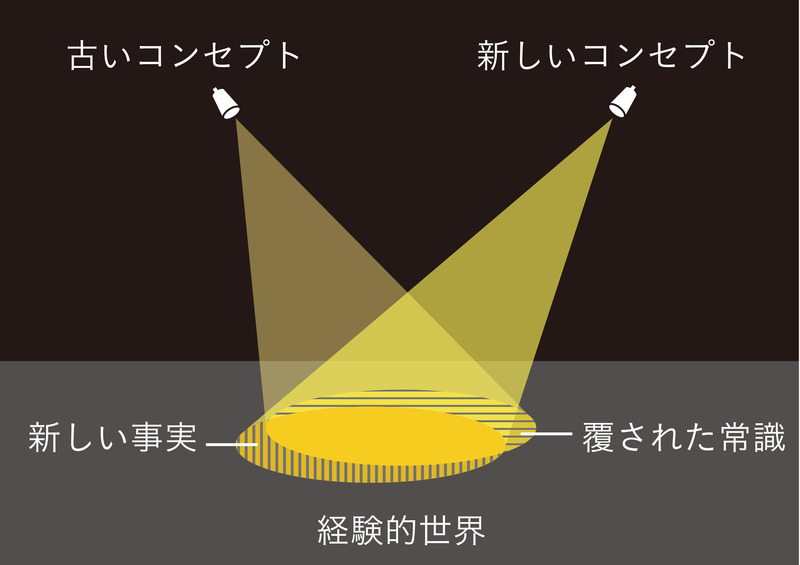Cold days continue, but on my days off, I play tennis with my coworkers. Sweating it out all day leaves me feeling refreshed, both physically and mentally. Before I know it, I'm asking, "Fancy a drink?" "Sounds good!"

Tennis buddies
This time it was "Alright, let's head to Sō-chan's place (meaning my humble abode)." What comes in handy for such last-minute guests is homemade preserved food. Fortunately, I had some pickled red turnips and salted napa cabbage I'd bought in Tateshina a while back. Or rather, the cabbage was actually over-pickled, an old-style pickle. It had fermented so much that the whole house was filled with that "pickle smell," so I figured this was the perfect chance to use it all up at once.
So, the first thing I made was "Old Pickled Chinese Cabbage and Pork Belly in a Small Pot". I think stewing German sauerkraut with a pork belly block is one of the most delicious things ever, and this is the Japanese version. The pickled cabbage was cut a bit finer than usual. I also poured plenty of the pickling liquid that had collected in the container into the pot. This provided almost all the saltiness needed. I added a small amount of sake and soy sauce, then simmered it with sliced pork belly.

This is homemade aged pickled cabbage
Maybe everyone was tipsy, but it was a huge hit. I was drinking too, so I can't say for sure, but I think it turned out pretty well.

At first, everyone was full of energy,

by the end, the floor heating had gotten the best of us, and it was time to say goodnight.
Come to think of it, this Japanese-style sauerkraut recipe perfectly aligns with the concept of "pickles as seasoning" proposed by Emiko Miyagi of Konohana-ya (Nagano Prefecture).
Did you know that simply stir-frying or mixing pickles with other ingredients makes them incredibly delicious? Pickles contain not only the umami of vegetables but also numerous flavor components developed through time-consuming fermentation and maturation. When used in cooking, these flavor components create a deep taste and act as a seasoning.
From "Pickled Side Dishes" (Ie no Hikari Publishing)

Pickled Vegetable Side Dishes
This book introduces interesting recipes like "Rakkyo Potato Salad" and "Takuan and Anchovy Salad." I actually tried making a few, and they were quite tasty. It's a unique perspective, typical of Ms. Miyagi, who studied applied biology at university and researched fermentation at a soy sauce manufacturer. It truly shines a spotlight on new facts about pickles.
But what if we conducted a survey like this among consumers?
[Interest] Are you interested in "pickles as seasonings"?
[Intention] Do you think you would use "pickles as seasonings"?
[Menu-Specific Intention] Would you like to make the following dishes?
・Stir-fried pickled cucumbers with cashews
・Pickle and sweet orange salad
・Fried Dried Persimmons with Plum Unless you're a serious pickle enthusiast, you probably wouldn't answer "Strongly Agree." That's because the concept is a word pointing toward the future. It's an insider term only understood by professionals directly involved in the project, distinct from "(advertising) copy" designed to move consumers.
Henry Ford, creator of the Model T Ford that dominated the early 20th-century auto industry, reportedly said, "If I had asked customers what they wanted, they would have said 'faster horses.'"
Despite this, it's regrettable that so many "concept" surveys are still conducted, stifling countless ambitious "perspectives." Of course, market research is important and undoubtedly provides valuable information for marketing. However, especially in organizations where "corporate bureaucracy" is a concern, I often feel surveys are used as a convenient excuse to avoid making necessary decisions.
This dynamic might be part of the appeal of doing business directly with local entrepreneurs brimming with drive.
Next time, I'd like to explore creativity through the lens of photographer Shoko Ogushi's solo exhibition "Theory of the Beautiful Boy," who left Dentsu Inc. after joining as a peer and went independent.
Enjoy!








